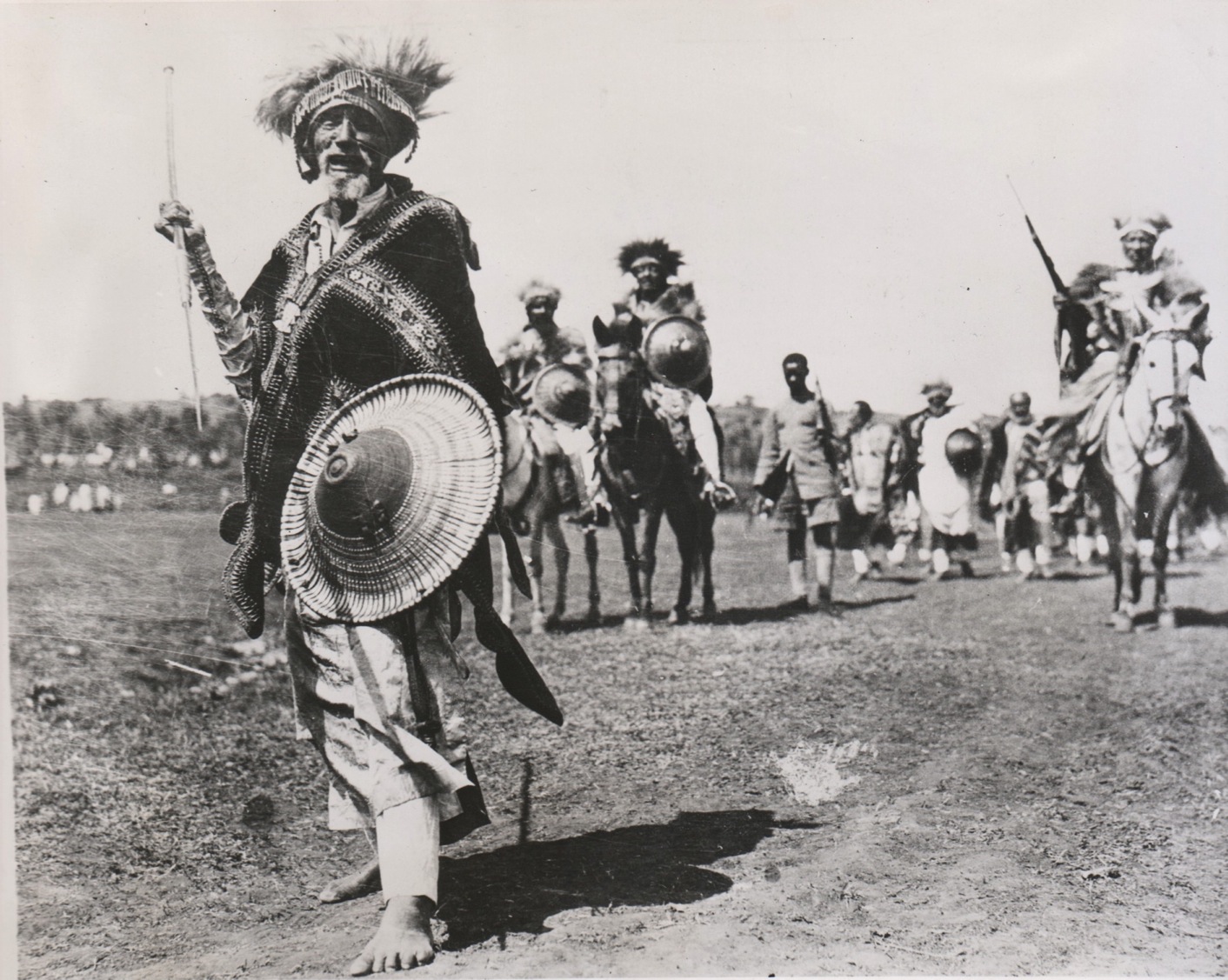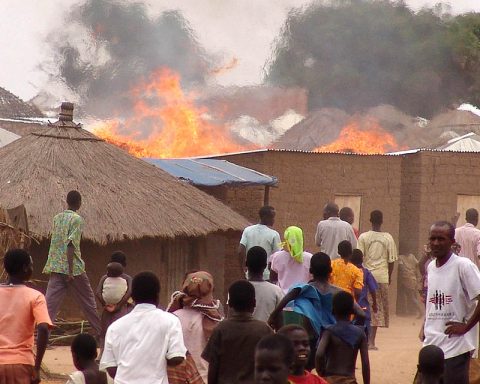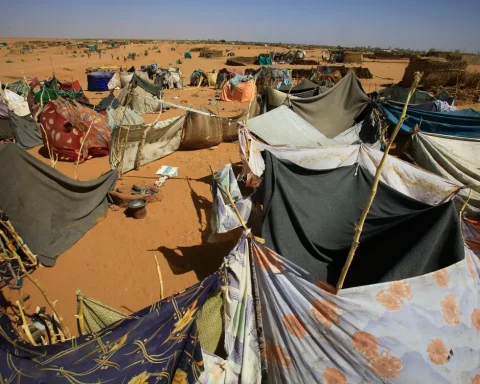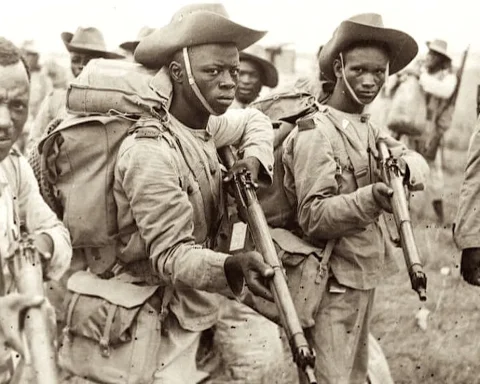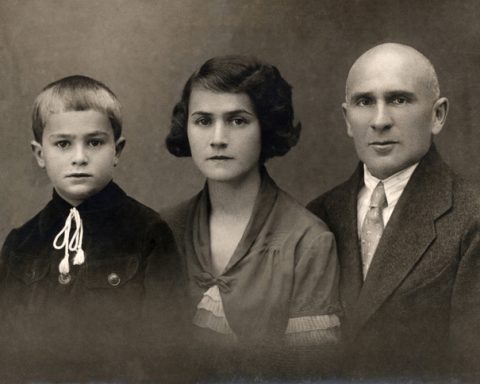The Battle of Mogadishu, often called Black Hawk Down, was a part of Operation Gothic Serpent. It happened on October 3 and 4, 1993, in Mogadishu, Somalia, between US forces serving as part of a larger United Nations peacekeeping mission and Somali militias loyal to Somali General Mohamed Farrah Aidid.
The conflict was part of the larger Somali civil war, which had been ongoing since 1991. The United Nations initially intervened to offer food supplies to ease the widespread hunger but then expanded its mission to include democracy rebuilding and the restoration of government.
On June 5, 1993, the UN’s peacekeeping forces suffered their worst loss in decades when the Pakistani contingent was ambushed while checking Aidid’s arms locations. Aidid was deemed directly responsible for the incident, and a manhunt for him began, which would characterize much of the UN operations from that moment forward, including the Battle of Mogadishu. On July 12, 1993, US forces in Mogadishu raided the Abdi House as part of the campaign to seize Aidid, murdering multiple Habr Gidr members.
On August 8, 1993, Aidid carried out the first targeted killing of American personnel, prompting US President Bill Clinton to dispatch Army Rangers to apprehend him.
On October 3, 1993, US forces planned to capture two of Aidid’s senior lieutenants during a conference in the Aidid-controlled area of Mogadishu. The attack, which was supposed to last an hour, escalated into an all-night siege and rescue effort that lasted into the following day’s daylight hours. The operation’s goal was met, but it was a meaningless success that evolved into a bloody war for Mogadishu.
During the raid, Somali forces armed with RPG-7s downed two American Sikorsky UH-60 Black Hawk helicopters.
More American forces were deployed to protect survivors of the crashes, sparking a fierce defense of the downed helicopters.
On the morning of October 4, a UN armored convoy fought its way to the helicopters, suffering additional fatalities but ultimately rescuing the survivors.
The precise number of Somali casualties is unknown, however, estimates range up to 3,000-4,000. The Red Cross estimates that another 200 Somali villagers were slain when they allegedly attacked the Americans.
The Pentagon initially claimed five American soldiers were killed, but the final count was 18 dead and 73 wounded, the highest U.S. casualty total since the Vietnam War.
After the conflict, dead American soldiers were dragged through the streets by Somalis, as shown on international television, sparking a massive public uproar in the US. In response, President Bill Clinton withdrew the remaining US forces. Fear of a repeat of the fight was one of the reasons why the Americans were hesitant to engage further in Somalia and other regions. The fight altered American foreign policy, ultimately leading to the removal of Mission UN in 1995.
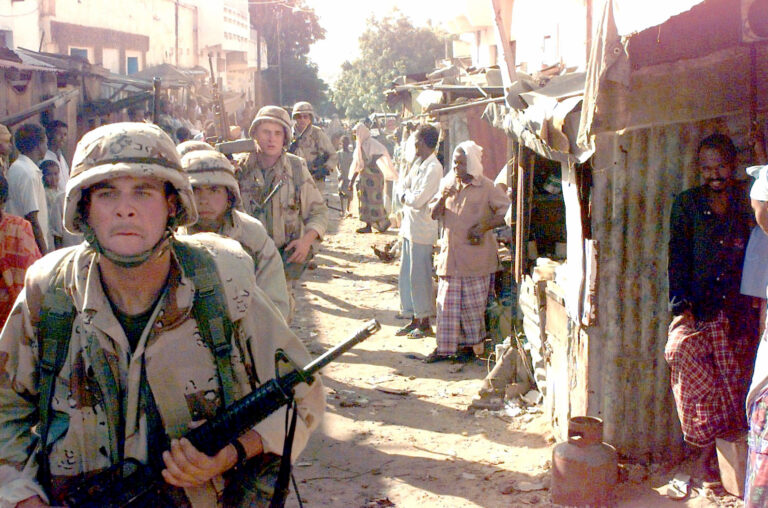
REFERENCES
- Aadan, Cabdishakur Mire (2011) Kobocii: Islaamiyiinta Soomaaliya 1952–2002. (in Somali) Illays Media Center ISBN 978-0954955588 OCLC 867835903
- Bowden, Mark (1999) Black Hawk Down: A Story of Modern War Berkeley, CA: Atlantic Monthly Press ISBN 0-87113-738-0
- Bowden, Mark (2010) Black Hawk Down: A Story of Modern War New York ISBN 978-0-8021-4473-7 OCLC 456177378
- Drysdale, John (1994) Whatever happened to Somalia? London: HAAN ISBN 1-874209-51-0 OCLC 30736422
- Eversmann, Matthew (SSG) (2005) The Battle of Mogadishu: Firsthand Accounts from the Men of Task Force Ranger Presidio Press ISBN 0345466683
- United States Army (2003) “United States Forces, Somalia After Action Report and Historical Overview: The United States Army in Somalia, 1992–1994” (PDF) United States Army Center of Military History Archived from the original (PDF) on 1 August 2022 Retrieved 7 August 2022
- Wright, Lawrence (2006) The Looming Tower: Al-Qaeda and the Road to 9/11. New York: Knopf ISBN 037541486X



